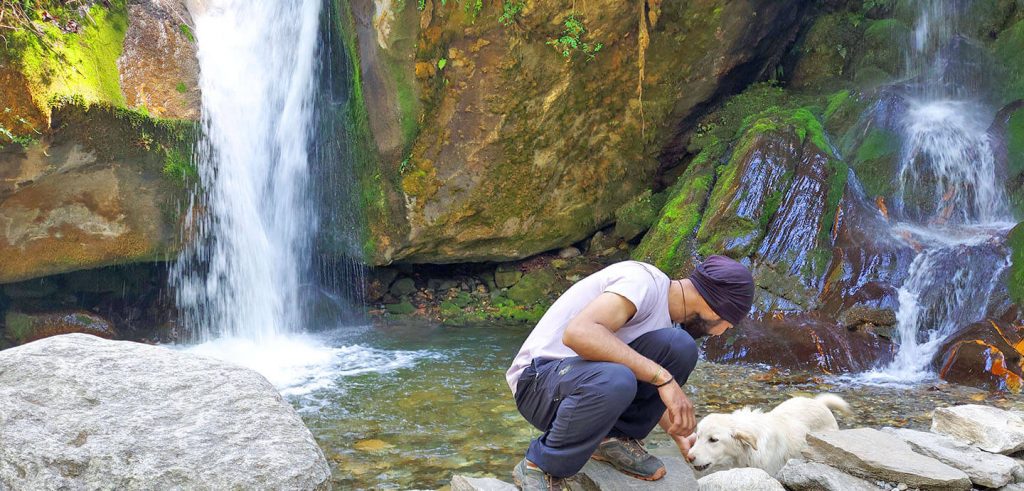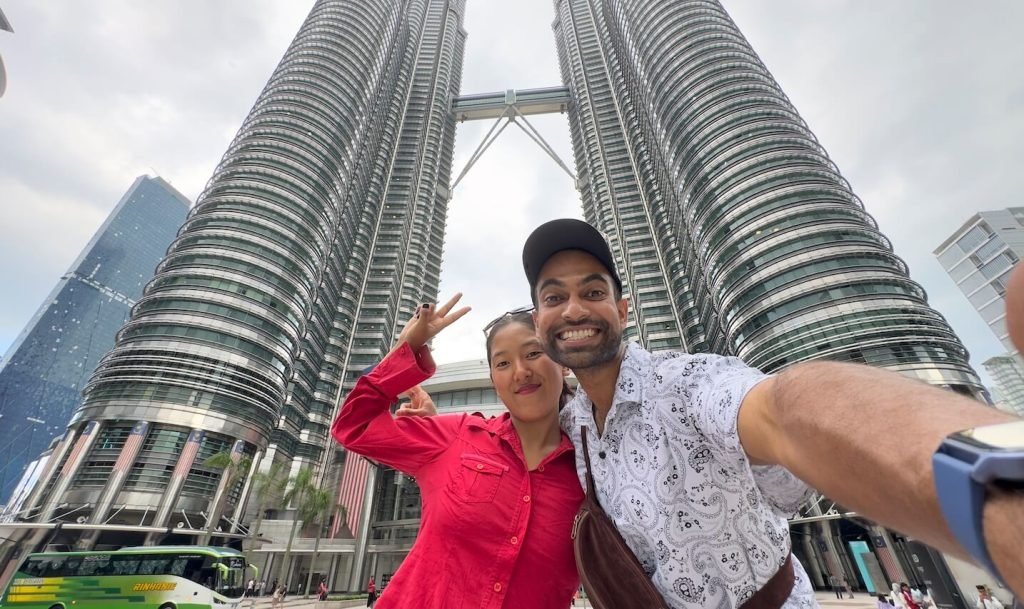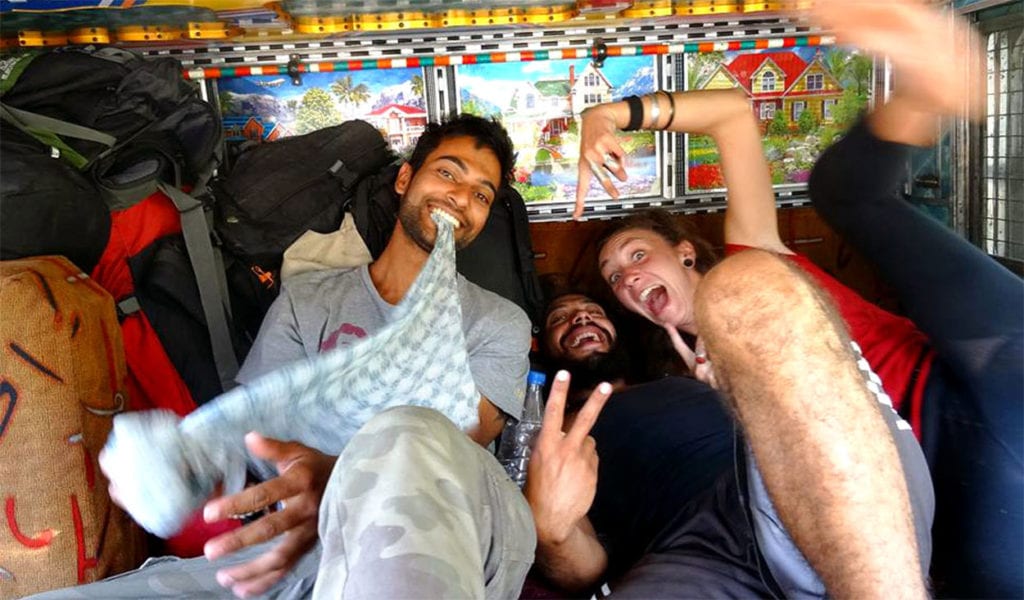Update March 2025: To my surprise, Sajla water has become very popular of late. There are Maggi shops right in the waterfall area. Earlier, it used to be just pure nature.
The first time I visited the place, in 2021, I spent about an hour there without seeing a face, but this time, as I planned a trip to Sajla Waterfall on a Tuesday afternoon it felt all chaotic. Here are two photos I clicked. I didn’t spend more than a minute around the waterfall…
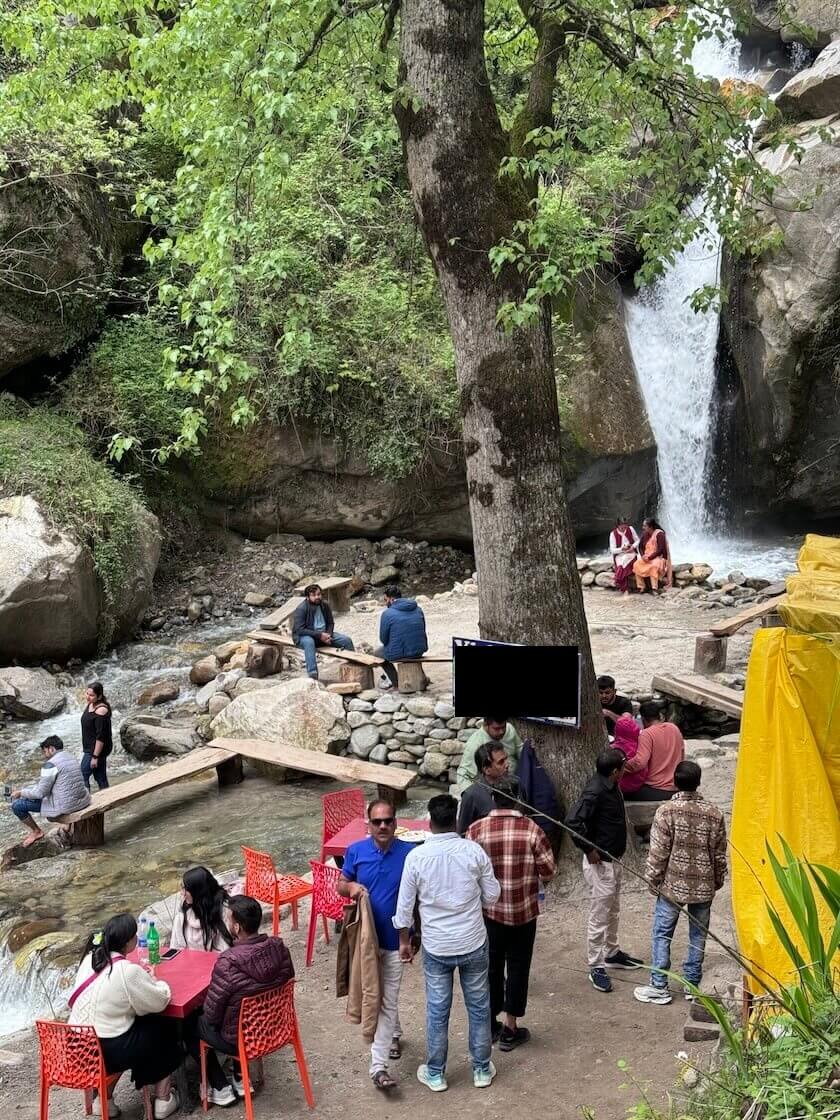

Let’s begin with my first visit to Sajla Waterfall…
“Jogini waterfall has become very mainstream of late. I personally like Sajla Waterfall (and two more names provided) the more,” I very well recalled Balwant’s recommendation as I began the trek to the waterfall from Vishnu Temple.
Surrounded by a canopy of thick deodar forest with a water stream flowing graciously through it, I realised Balwant’s recommendation wasn’t for nothing. Running a hotel in Manali for a decade certainly makes him a living encyclopedia of the region. He knew Kullu Valley like the back of his hand.
Another offbeat waterfall near Manali: Parsha Waterfall (But this is getting crowded too lately).
A Recommended offbeat trek in Manali
If you are looking for an offbeat hike where a guide takes you to a random mountain-peak or a waterfall surrounded by no tourists and just pure nature, book this tour by clicking here. The tour is organised by locals in Manali, promoted by Viator. You get a 20% discount if you book via my affiliate link given right above.
Sajla Waterfall
Also spelt as Sajjla, think of it as one of those hidden treasures that most Instagrammers would like to flock to but they aren’t because they don’t know about it. Time for laughing out loud!
In April, when most other waterfalls around Manali were still pretty dried up, the Sajjla waterfall appeared in full flow.
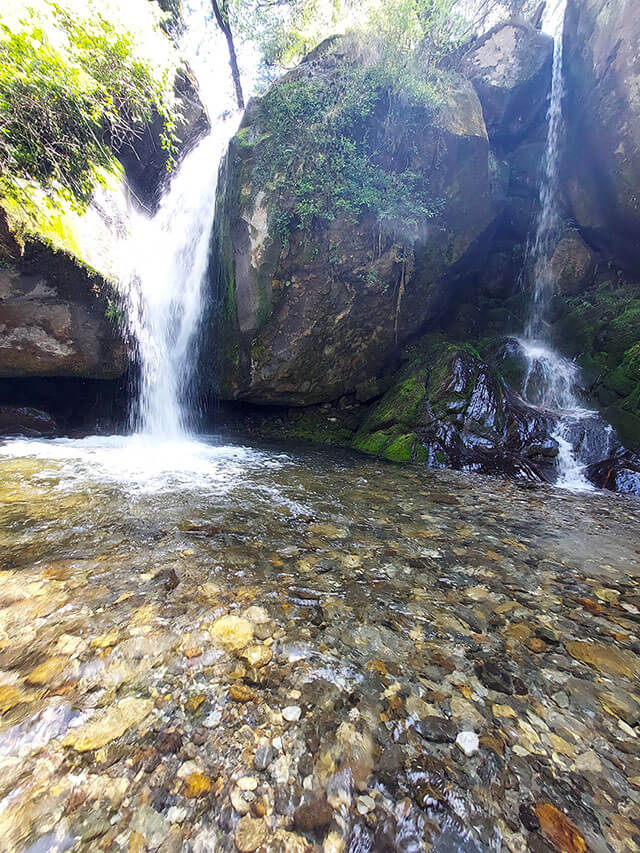
It was falling from a height of 20 feet or so, thundering down, forming a gigantic pool, and foaming it at the bottom. The rest of the pool was as clear as cellophane, allowing me to see down into the rocky bottom. The waterfall looked like a sheet of green velour as it swished down.
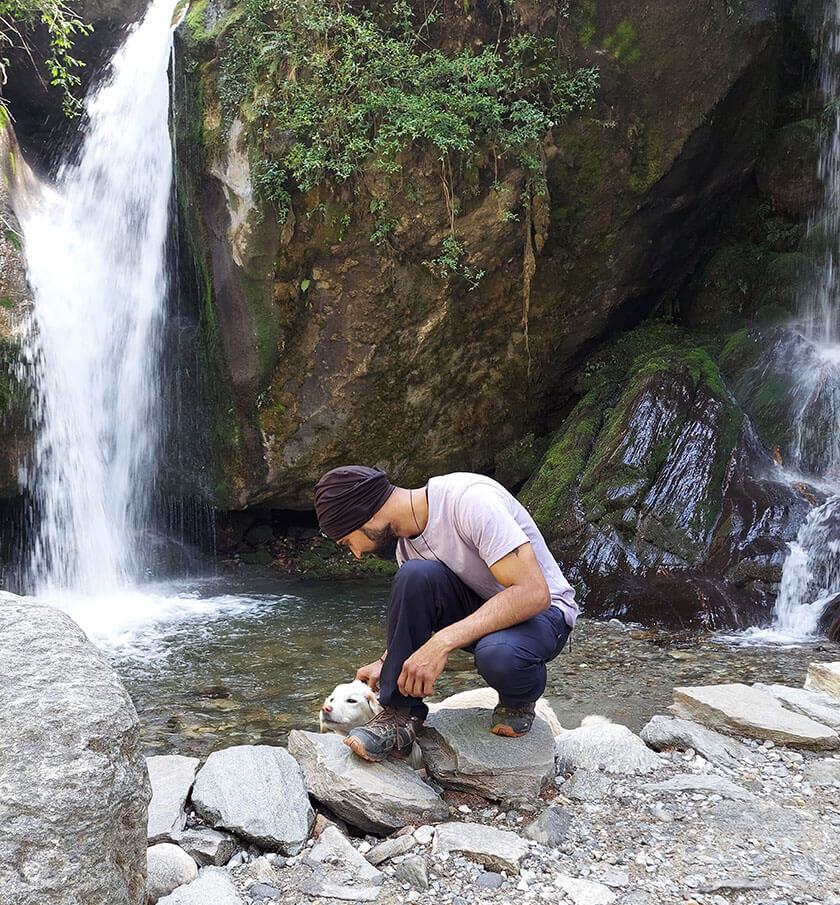
The flowers next to the gigantic pool were nodding gently as if approving of some viral Instagram content. Their honey-sweet smell was certainly an invitation.
Pounding the rocks underneath, leaving an aquarium blue colour, the entire scene felt no less surreal. It is possible to take a refreshing bath underneath the falls or leisurely swim in the forming pool. The best time to do so, however, will be the months of June, July and September — that too if it’s sunny and bright.
Right next to Sajjla Waterfall, you will find a local family running a small café with Maggi, chai and a few other refreshments including the local delicacy of Siddu on the menu.
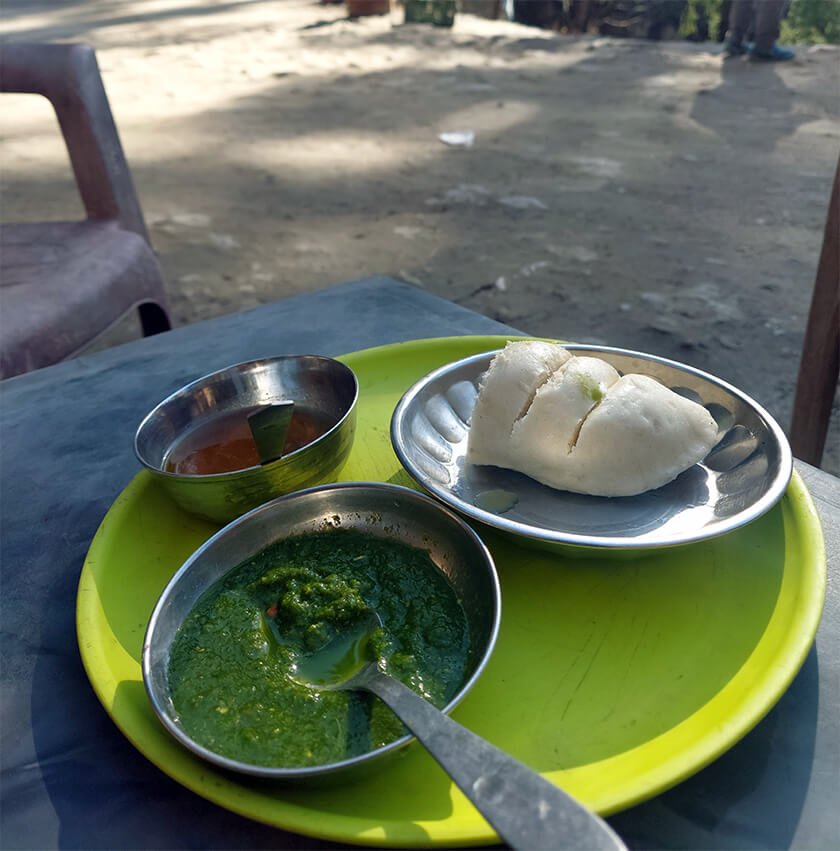
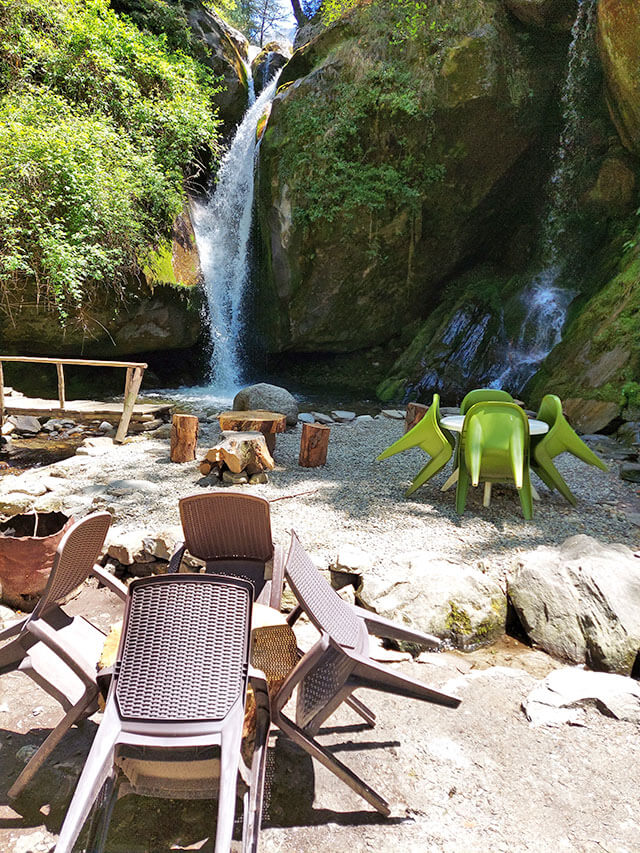
How to Get There
The waterfall is situated on the left bank of the Beas River (on Naggar Road, or the old Kullu Manali Highway). It is a part of the Sajla village which is about 10 km from Manali.
Having said that, the nearly 1km trek to the actual site starts from Sajla village, precisely from the Vishnu temple.
To get there, and if you’re driving from Delhi to Manali, take the Naggar Road from Kullu (and not the new highway). Almost halfway between Kullu and Manali lies the town of Sajla.
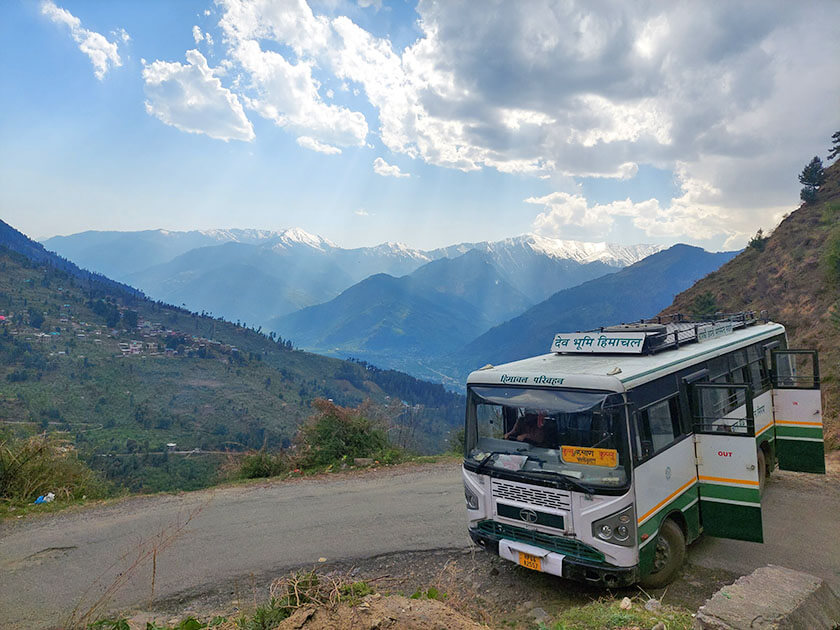
Alternatively, take any local Kullu-Manali bus that goes via Naggar. Get off at Sajla Village and walk towards the Vishnu Temple (500m from the main road where the bus will drop you off). From Vishnu temple, the 1km trek will take you deeper into the valley.
The way to the fall has been properly marked.
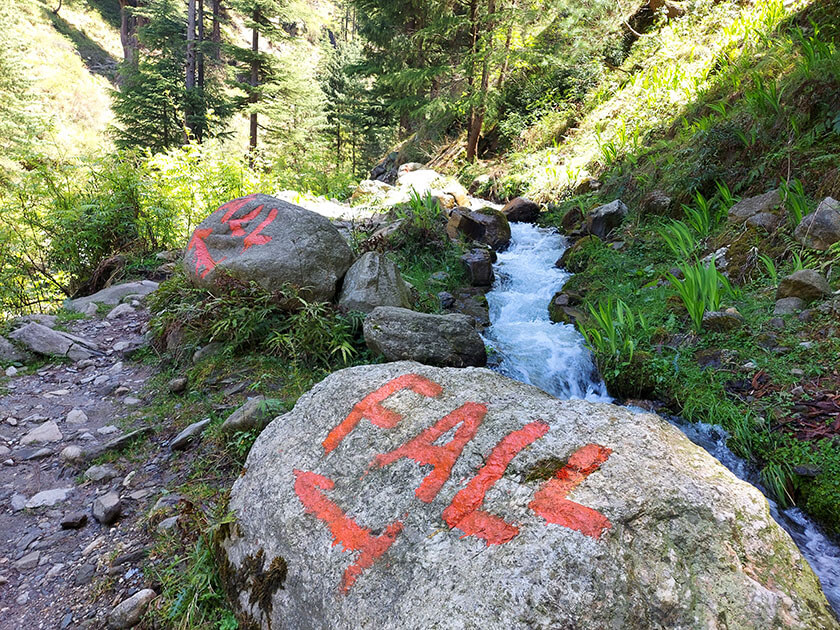
What Else To See & Do There
Other than the waterfall it is worth taking a stroll deeper into the jungle, surrounded by deodar and pine trees with enthralling views of the adjoining mountain peaks.
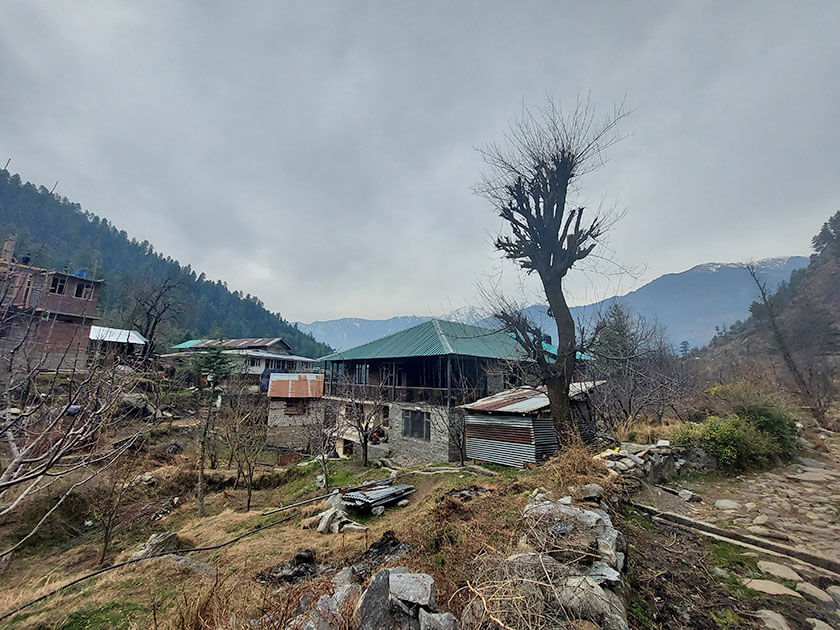
Between December & April, most surrounding peaks are found snow-covered.
Other than trekking and hiking nearby, and perhaps taking a dip in the pool, it is worth exploring Sajla village too. It is a quaint Himalayan town with about 30 or so houses, out of which 10 are still the original traditional Kath-Kuni.
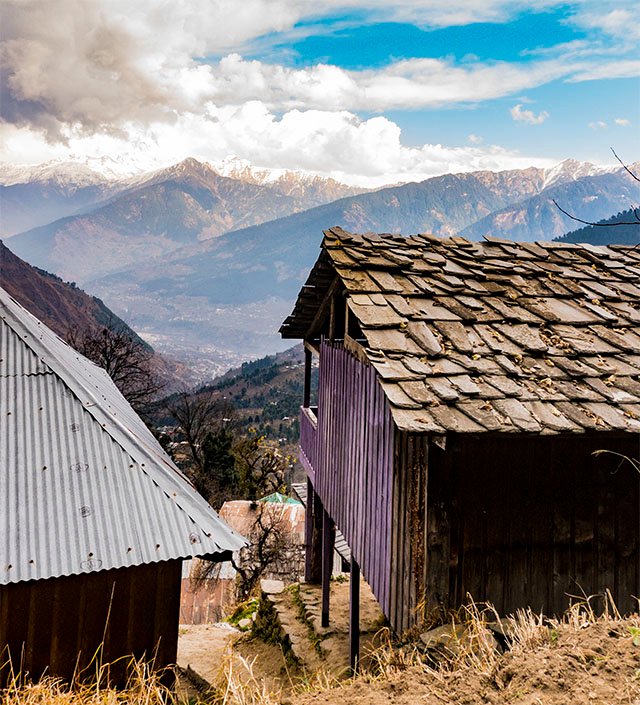
Lying in the centre of the village is the popular Lord Vishnu temple (also known as Sajla temple) which is certainly worth a visit. On the outer walls of the temple, there are carvings of Shiva-Parvati with Ganesha and Krishna-Radha. In the vicinity of the temple is a very old tree, where the villagers come to pray and worship.
It is worth visiting the temple during the festivities, especially around the festival of Fagli.
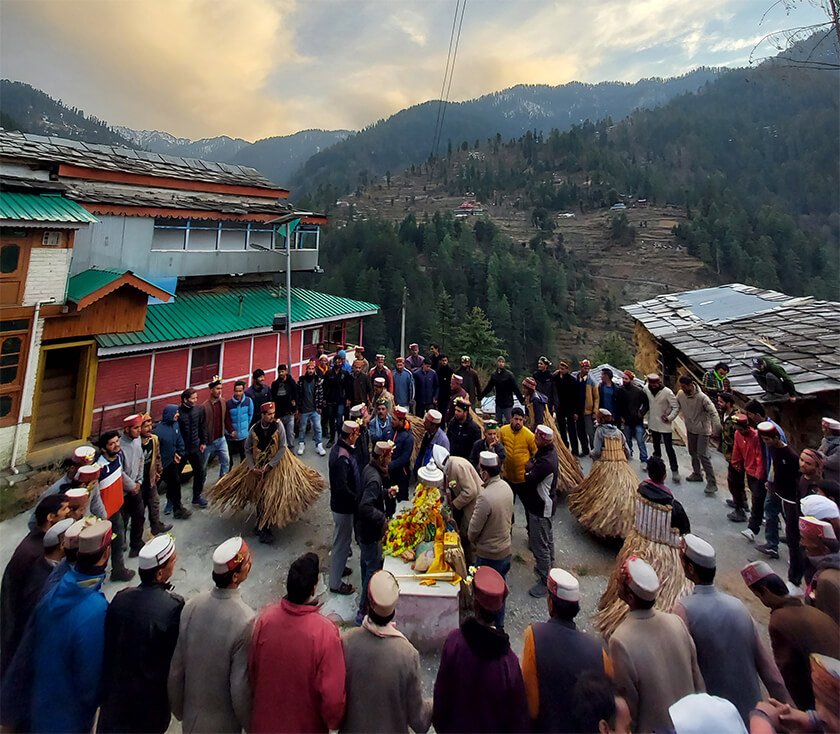
The compound of the temple is quite massive and an interesting thing to note is the three tall sacred poles. According to a local legend, the temple was supposedly the battleground between the gods and demons, and these huge poles are said to be arrows struck by the gods.
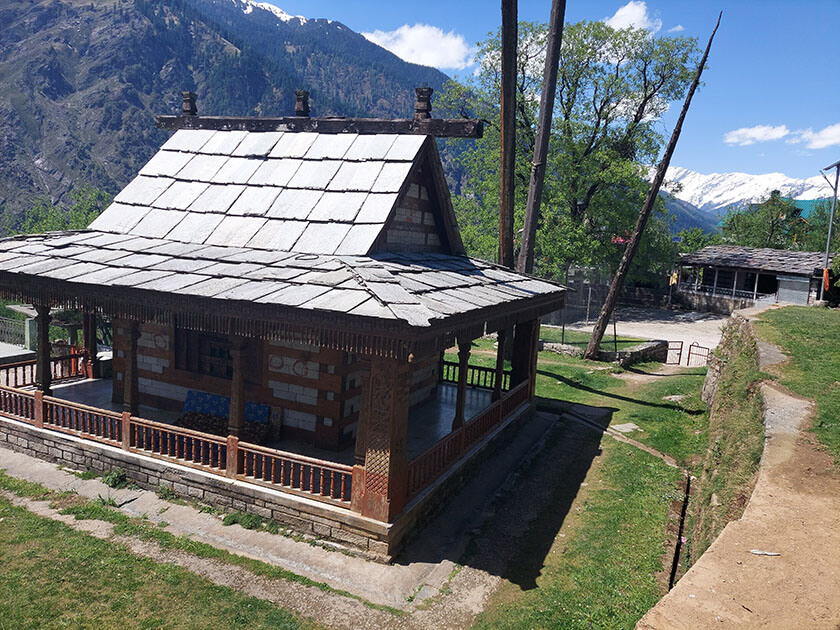
That’s all in this blog about Sajla waterfall. If you have any questions or want me to add something to the blog, please leave a comment below.
If you have a question or would like to connect, please find me on Instagram. You can also follow my YouTube channel for video updates.
Also Read: Planning a day trip from Manali to Jana Waterfall.

